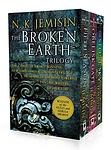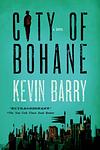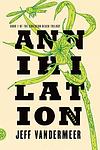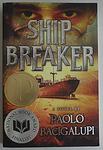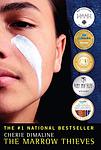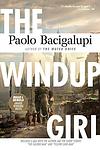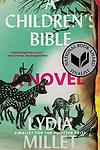The Greatest "Fiction, Post Apocalyptic" Books Since 2000
Click to learn how this list is calculated.
This list represents a comprehensive and trusted collection of the greatest books. Developed through a specialized algorithm, it brings together 284 'best of' book lists to form a definitive guide to the world's most acclaimed books. For those interested in how these books are chosen, additional details can be found on the rankings page.
Genres
Post Apocalyptic is a genre of literature that explores the aftermath of a catastrophic event that has destroyed civilization as we know it. These stories typically take place in a world where resources are scarce, society has collapsed, and survivors must navigate a dangerous and unpredictable landscape. Themes of survival, morality, and human nature are often explored in Post Apocalyptic books, as characters struggle to rebuild their lives and make sense of a world that has been forever changed.
Countries
Date Range
Reading Statistics
Click the button below to see how many of these books you've read!
Download
If you're interested in downloading this list as a CSV file for use in a spreadsheet application, you can easily do so by clicking the button below. Please note that to ensure a manageable file size and faster download, the CSV will include details for only the first 500 books.
Download-
1. The Road by Cormac McCarthy
In a post-apocalyptic world, a father and his young son journey through a desolate landscape, struggling to survive. They face numerous threats including starvation, extreme weather, and dangerous encounters with other survivors. The father, who is terminally ill, is driven by his love and concern for his son, and is determined to protect him at all costs. The story is a haunting exploration of the depths of human resilience, the power of love, and the instinct to survive against all odds.
-
2. Cloud Atlas by David Mitchell
This novel is a unique blend of six different stories, each set in a different time and place, spanning from the 19th century South Pacific to a post-apocalyptic future. Each tale is written in a different style, reflecting the time and setting it represents, and they are all connected through shared themes and recurring motifs. The stories are nested within each other, with each interrupted by the next, only to be concluded in the second half of the book. The novel explores themes of predacity, civilization, reincarnation and the eternal recurrence of the same behaviors throughout history.
-
3. The Hunger Games by Suzanne Collins
Set in a dystopian future, the novel revolves around a teenager named Katniss Everdeen, who lives in a post-apocalyptic nation where the government, in order to maintain control, forces each of its twelve districts to send a boy and girl to participate in a televised annual event. This event, known as the Hunger Games, is a fight to the death. When Katniss's younger sister is selected to participate, Katniss volunteers to take her place. The book follows her struggle for survival in the cruel game, against the backdrop of a brewing rebellion against the oppressive regime.
-
4. The Fifth Season by N. K. Jemisin
A woman searches for her kidnapped daughter in a world ravaged by a catastrophic climate change event known as the Fifth Season. Simultaneously, the narrative follows a young girl with destructive powers and a man struggling to control his own similar abilities. The story explores themes of oppression, survival, and the destructive power of nature, all set in a dystopian world where the earth is constantly in flux, and society is strictly divided and controlled.
-
5. Oryx and Crake by Margaret Atwood
Set in a post-apocalyptic world, the novel follows the life of Snowman, who believes he may be the last human on earth, as he struggles to survive in a new, harsh environment. He is surrounded by genetically modified creatures, and his only companions are the Crakers, human-like beings created by his brilliant but disturbed friend Crake. Through Snowman's memories, the story of how the world came to be this way is revealed, involving a love triangle with the mysterious Oryx and the catastrophic consequences of Crake's scientific experiments.
-
6. Station Eleven by Emily St John Mandel
"Station Eleven" is a post-apocalyptic novel that revolves around the lives of several characters before and after a devastating flu pandemic wipes out most of the world's population. The narrative jumps back and forth in time, exploring the interconnectedness of the characters' lives through their shared memories and experiences. The story also follows a traveling Shakespearean theatre company as they navigate the dangers of a collapsed civilization, emphasizing the importance of art and human connection in times of crisis.
-
7. The Broken Earth Trilogy by N. K. Jemisin
The Broken Earth Trilogy is a captivating science fiction series set in a post-apocalyptic world where a woman with the power to control seismic activity is on a quest to rescue her kidnapped daughter. This world, called the Stillness, regularly experiences catastrophic climate change events known as Seasons, which its inhabitants constantly prepare for. The series explores themes of oppression, survival, and the human capacity for adaptation, all while providing a thrilling and poignant narrative that keeps readers engaged from start to finish.
-
8. Who Fears Death by Nnedi Okorafor
This novel is a coming-of-age narrative set in a post-apocalyptic Africa. It follows the journey of a young woman born from a violent act, who is prophesied to bring an end to a brutal regime. As she grows, she discovers her magical abilities and must learn to control them in order to fulfill her destiny. The narrative explores themes of race, gender, and power, while incorporating elements of African mythology and culture.
-
9. World War Z by Max Brooks
The book is an apocalyptic horror novel presented as a collection of individual accounts in the aftermath of a global pandemic that leads to a catastrophic zombie outbreak. Through interviews with survivors from various countries and walks of life, the narrative unfolds the social, political, cultural, and environmental implications of the zombie crisis, known as World War Z. The personal stories explore the widespread panic, the collapse and resurgence of governments, military strategies employed to combat the undead, and the human resilience in the face of a decimated world. The novel serves as a critique of societal responses to disasters and a commentary on the human condition.
-
10. City of Bohane by Kevin Barry
Set in the year 2053, the book is a dystopian tale about the city of Bohane, a place filled with vice, violence, and tribal warfare. The city is controlled by a gangster named Logan Hartnett, who is challenged by his estranged wife Macu and her lover, a rival gang leader. The narrative is filled with colorful characters, rich language, and a unique blend of futuristic and archaic elements, creating a vivid, darkly comic vision of a future Ireland.
-
11. Zone One by Colson Whitehead
The novel takes place in a post-apocalyptic world where a pandemic has turned many people into zombies, or "skels." The protagonist is a survivor who is part of a team tasked with clearing out the remaining skels in Zone One, the area in and around lower Manhattan. The story alternates between the present and the past, revealing the protagonist's experiences during the initial outbreak and his struggle to hold onto his humanity in the face of such devastation.
-
12. Annihilation by Jeff VanderMeer
In the novel, a team of four women—an anthropologist, a surveyor, a psychologist, and a biologist—embark on an expedition into Area X, a mysterious and remote region cut off from civilization. The area is known for its strange occurrences and the disappearance of previous expedition members. As the team delves deeper into the wild and enigmatic landscape, they encounter bizarre creatures, cryptic signs, and the remnants of a lost civilization. The biologist, serving as the narrator, documents their discoveries and her own personal transformations, driven by the unseen forces of Area X. The novel explores themes of nature, mutation, and the unknown, as the expedition's members confront the limits of knowledge and the consequences of seeking to uncover the inexplicable.
-
13. Feed by Seanan McGuire
In a world where humanity has been ravaged by a zombie apocalypse, a team of bloggers sets out to cover the presidential elections, offering a unique perspective on the state of a society where the undead are a constant threat. The protagonist, a young woman with a passion for the truth, navigates a landscape of danger, political intrigue, and conspiracy, all while dealing with the challenges of living in a post-apocalyptic environment. As they delve deeper into the heart of America's reanimated politics, they uncover a plot that could have dire consequences for both the living and the undead, forcing them to confront the question of what it truly means to be human in a world overrun by zombies.
-
14. How I Live Now by Meg Rosoff
A 15-year-old New Yorker is sent to live with her eccentric British cousins on a remote farm in England, where she falls in love with her cousin. Their idyllic summer is shattered when war breaks out and the country falls under martial law. The protagonist must learn to survive in this brutal new world, while also grappling with love, loss, and the complexities of adolescence.
-
15. Children Of Time by Adrian Tchaikovsky
"Children of Time" by Adrian Tchaikovsky is a science fiction novel that explores the evolution of two species, humans and spiders, on different planets. When Earth faces destruction, a group of humans embarks on a mission to terraform a new planet and create a new civilization. However, an experiment involving a virus meant to accelerate the evolution of monkeys goes wrong, leading to the unintended uplift of spiders. The story follows the parallel development of both species, highlighting their struggles, conflicts, and eventual convergence as they vie for dominance in a rapidly changing world.
-
16. The MaddAddam Trilogy by Margaret Atwood
The MaddAddam Trilogy is a dystopian series set in a post-apocalyptic world ravaged by a man-made plague. The story revolves around a small group of survivors, including a bioengineer who helped create the new world, a woman who is the last of a religious sect, and a man who may be the last human with natural birth. The narrative explores themes of genetic engineering, corporate domination, and the consequences of playing God. The trilogy also features a new species of humanoids, designed to be peaceful, cooperative, and sustainable, who may be the future of life on Earth.
-
17. Ship Breaker by Paolo Bacigalupi
Set in a dystopian future along the Gulf Coast, the story follows a young scavenger named Nailer who works on the light crew, stripping copper wiring from grounded oil tankers for a living. The world is ravaged by climate change, with rising seas and devastating hurricanes. After a brutal storm, Nailer discovers a luxury clipper ship washed ashore with a wealthy girl barely alive amidst its wreckage. Faced with the decision to strip the ship for its wealth or rescue the girl, Nailer is thrust into a high-stakes adventure that challenges his understanding of loyalty, morality, and his own survival. As he navigates through treacherous waters, both literal and metaphorical, he confronts ruthless enemies and forms unexpected alliances, all while dreaming of a life beyond the squalor and brutality of his current existence.
-
18. Angelfall by Susan Ee
In a post-apocalyptic world where angels have descended to Earth and unleashed destruction, a resilient teenage girl embarks on a perilous journey to rescue her kidnapped younger sister. With society in ruins and danger at every turn, she allies with a mysterious angel whose motives are unclear, navigating a landscape filled with roving gangs, gruesome creatures, and celestial warriors. As she fights to survive and uncover the truth behind the invasion, she confronts the blurred lines between good and evil, and the potential darkness within herself and her enigmatic companion.
-
19. The Stone Sky by N. K. Jemisin
In this concluding volume of a groundbreaking fantasy trilogy, the fate of a world hangs in the balance as a mother and daughter find themselves on opposite sides of an apocalyptic war. The mother, an orogene with the power to control seismic activity, embarks on a quest to end the perpetual disasters plaguing the earth by harnessing the power of an ancient, mythical obelisk. Meanwhile, her daughter, who possesses similar abilities, is manipulated by forces seeking to use her powers for their own ends. As their paths converge, the complex layers of oppression, survival, and the struggle for freedom are revealed, culminating in a climactic battle that will determine the future of their world.
-
20. Seveneves by Neal Stephenson
In this science fiction epic, humanity faces an existential crisis when the moon suddenly explodes, triggering a catastrophic chain of environmental disasters on Earth. With only two years before the planet becomes uninhabitable, nations unite to launch a daring plan to preserve human life by sending a select group of survivors into orbit. The narrative spans thousands of years, chronicling the efforts of these initial survivors to maintain the human race in space, the political and social challenges they face, and the eventual attempt by their far-future descendants to return to a drastically changed Earth. The story is a sweeping examination of human resilience, ingenuity, and the enduring quest for survival against insurmountable odds.
-
21. American War by Omar El Akkad
Set in the late 21st century during the second American Civil War, this novel follows the life of Sarat Chestnut, a young girl from Louisiana. As the South refuses to give up fossil fuels, the country plunges into a violent and chaotic war, leading Sarat and her family to live in a refugee camp. Sarat's experiences of loss and hardship fuel her transformation into a hardened instrument of war. The novel explores themes of revenge, the impact of war on individuals, and the cyclical nature of violence.
-
22. The Marrow Thieves by Cherie Dimaline
In a dystopian future where people have lost the ability to dream, leading to widespread madness, Indigenous people in North America are hunted for their bone marrow, which holds the cure for the rest of the world's dreamlessness. The story follows a young Indigenous boy and his companions as they navigate this perilous landscape, struggling to survive against the government "recruiters" who seek to harvest their marrow. As they journey through the ravaged lands, they must rely on their wits, their cultural heritage, and each other to retain their humanity against a society that seeks to take everything from them, including their dreams.
-
23. The Windup Girl by Paolo Bacigalupi
Set in a future Thailand amidst a world ravaged by climate change and depleted resources, the story unfolds in a bustling city where biotech corporations vie for supremacy. The narrative centers around a genetically engineered "New Person," known as the Windup Girl, who is trapped in a life of servitude and exploitation. As the city teeters on the brink of political and environmental collapse, the fates of various characters—including a foreign energy investor, a disgraced geneticist, and a street-smart refugee—intertwine with that of the Windup Girl. Together, they navigate a treacherous landscape of corporate greed, oppressive government, and social upheaval, in a desperate search for survival and redemption in a world where every action has unforeseen consequences.
-
24. A Children’s Bible by Xe Sands, Lydia Millet
"A Children's Bible" follows a group of children and their parents who are spending the summer in a rented house in the countryside. As the parents indulge in drinking and infidelity, the children are left to their own devices and begin to explore the surrounding wilderness. When a severe storm hits and the world as they know it begins to crumble, the children turn to their own imaginations and a battered old Bible for guidance. The novel is a poignant commentary on climate change, societal decay, and the resilience of youth.
-
25. Severance by Ling Ma
This novel is a satirical take on the post-apocalyptic genre, blending elements of horror, humor, and social commentary. It tells the story of Candace Chen, a millennial office drone in New York City, who finds herself one of the few survivors of a global pandemic known as Shen Fever. The disease turns its victims into repetitive, predictable creatures stuck in loops of their former routines. As society crumbles around her, Candace joins a group of survivors led by the enigmatic Bob, embarking on a journey to find a new sanctuary. Through Candace's eyes, the narrative explores themes of nostalgia, capitalism, and the search for meaning in a pre- and post-apocalyptic world, all while questioning what it truly means to be alive in a world that's slowly fading away.
Reading Statistics
Click the button below to see how many of these books you've read!
Download
If you're interested in downloading this list as a CSV file for use in a spreadsheet application, you can easily do so by clicking the button below. Please note that to ensure a manageable file size and faster download, the CSV will include details for only the first 500 books.
Download





